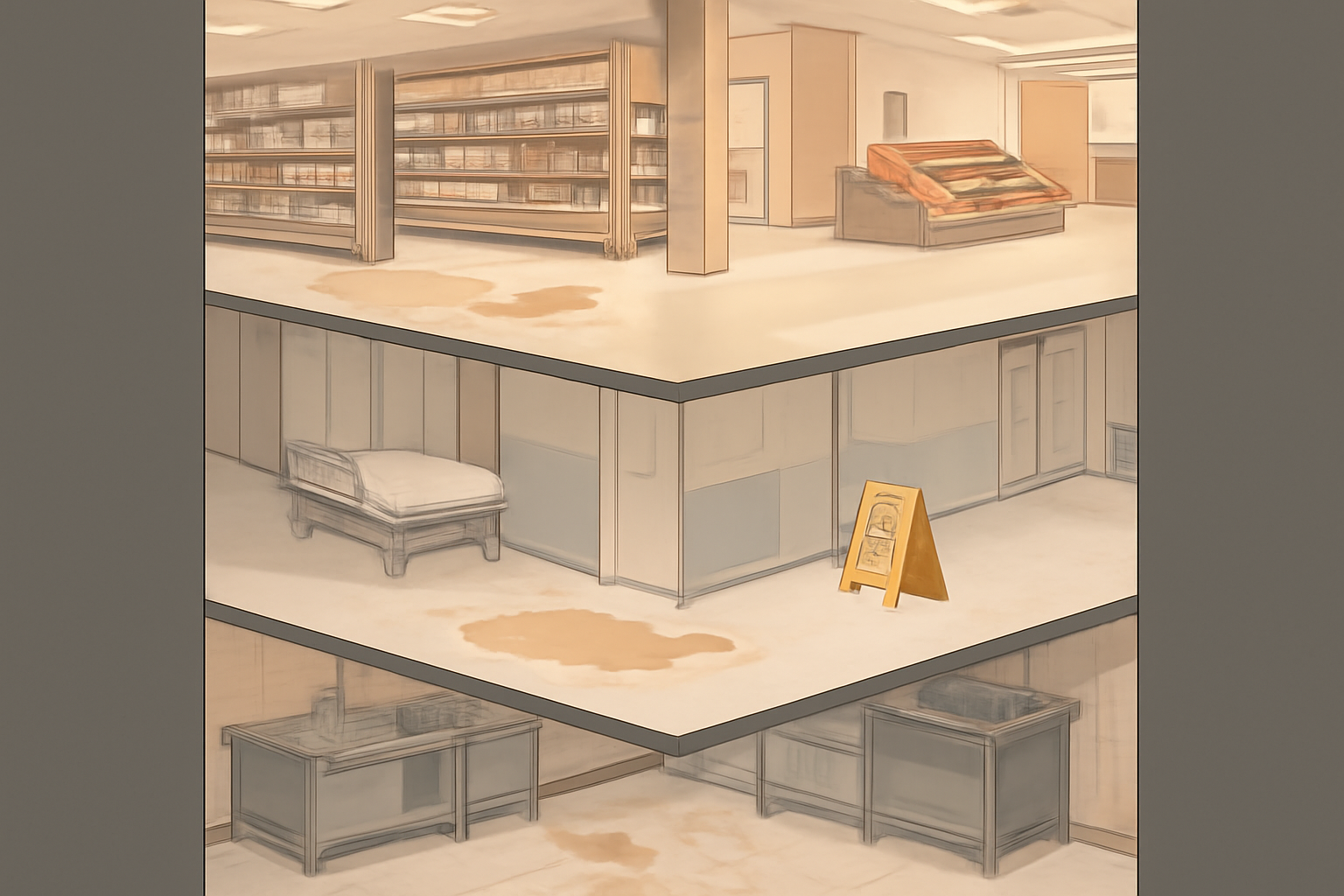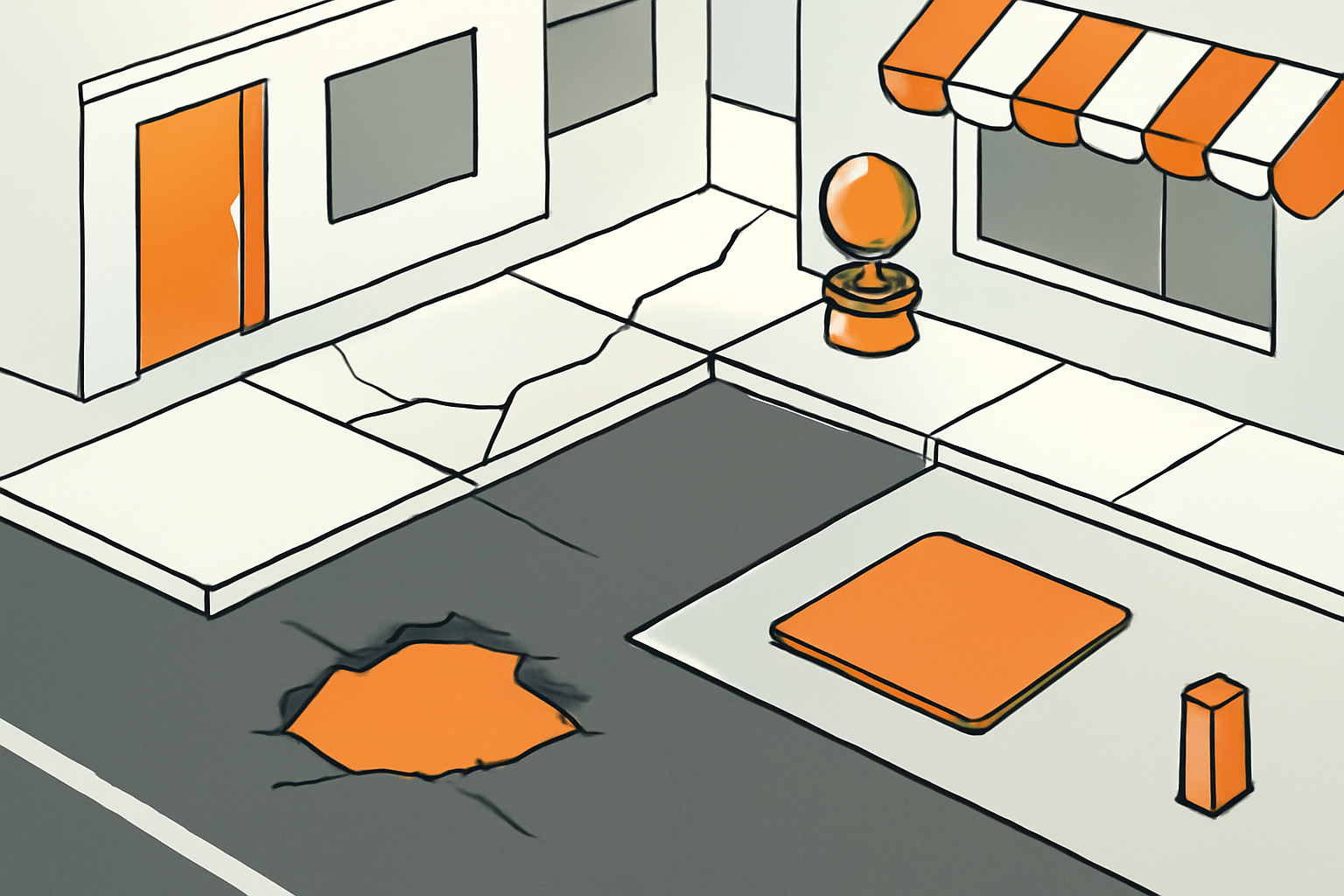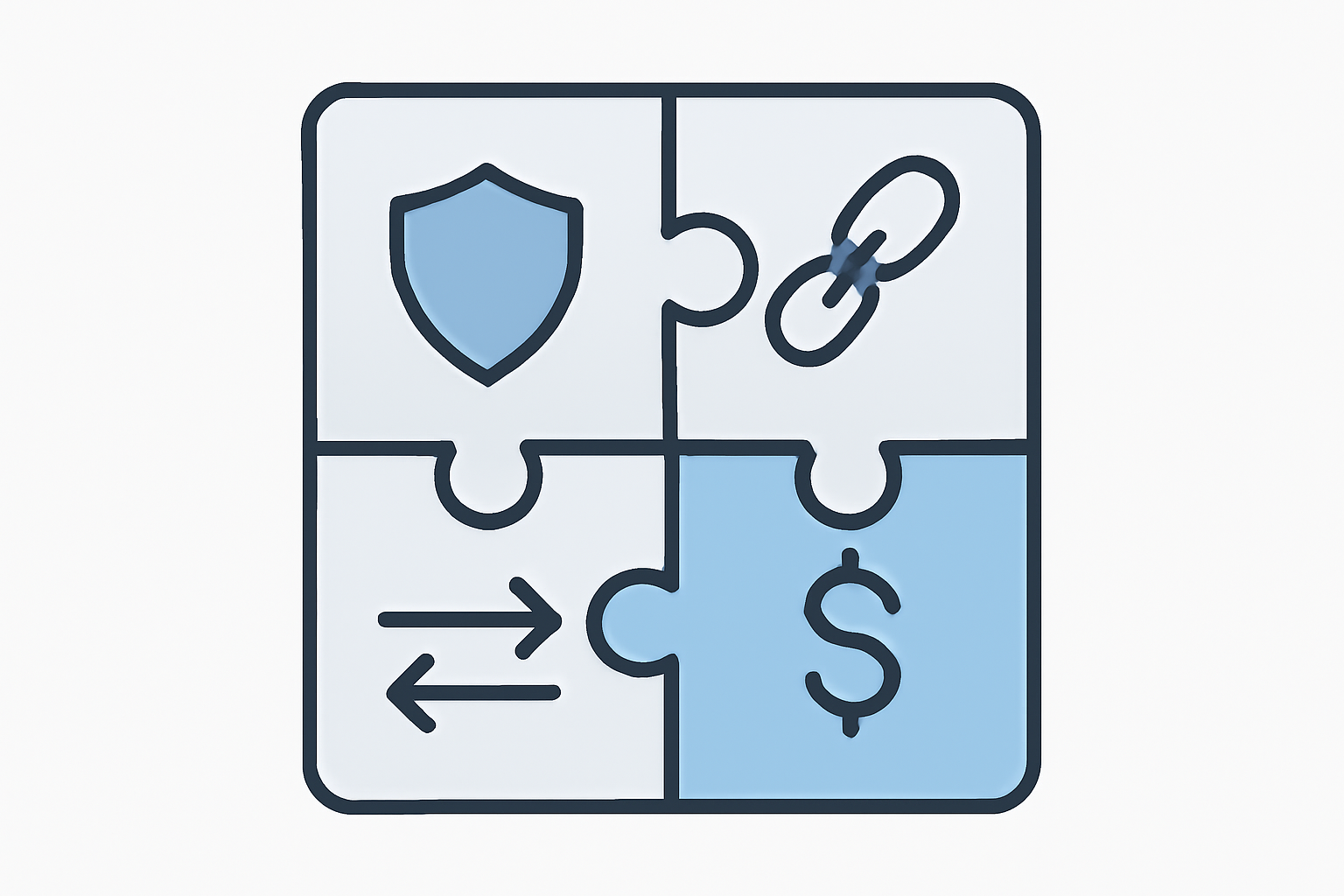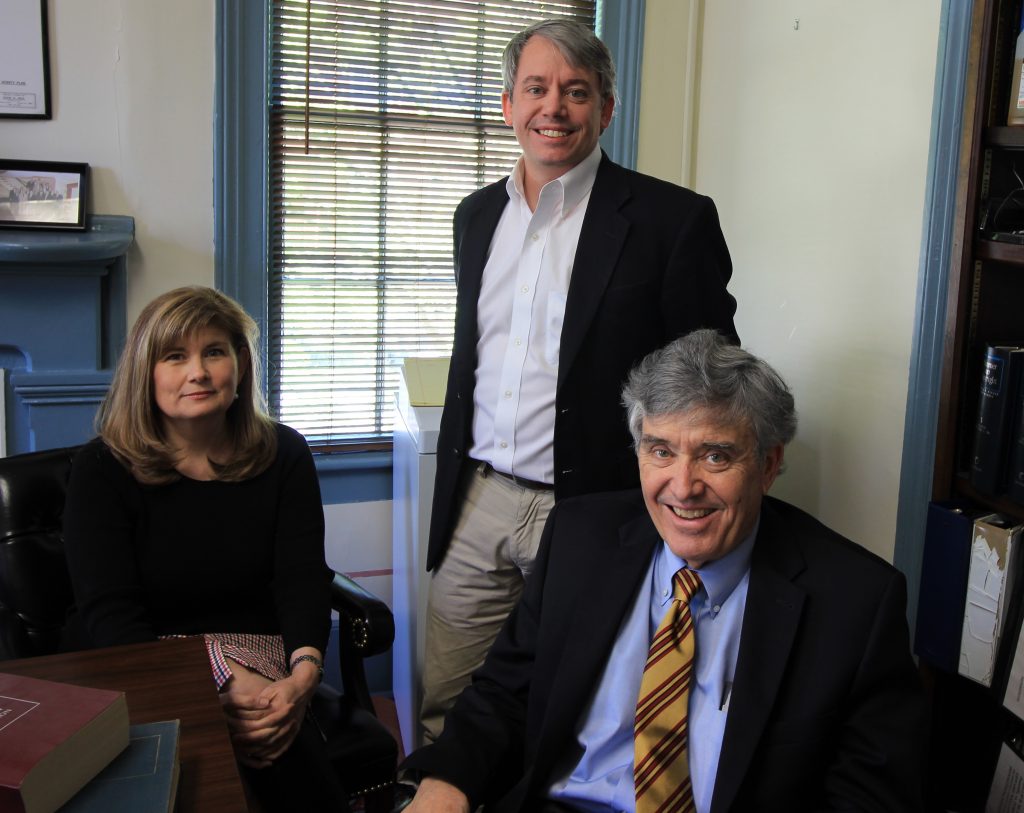Identifying Common Slip and Fall Hazards
Wet and Slippery Surfaces
Wet and slippery surfaces account for a significant portion of slip and fall accidents that lead to injury lawsuits. In grocery stores, hospitals, and restaurants, spilled liquids pose constant dangers to unsuspecting visitors. These spills might include water, coffee, cleaning solutions, or even bodily fluids in healthcare settings.

What many people don’t realize is that freshly mopped or waxed floors create particularly dangerous conditions, especially on smooth surfaces like marble, ceramic tile, or polished concrete. Without proper anti-slip coatings or mats, these surfaces become remarkably slick, similar to walking on ice. According to personal injury experts, property owners often fail to place adequate warning signs after cleaning.
In humid environments, condensation from air conditioning units can create nearly invisible slick spots on floors. This is particularly common near entrances, bathrooms, and areas with temperature differences.
Grease and oil spills present heightened risks in specific environments. Restaurant kitchens, automotive repair shops, and industrial settings frequently deal with substances that dramatically reduce friction. These spills often appear as slight discolorations that go unnoticed until someone slips. Premises liability attorneys note that these cases often involve serious injuries due to the extreme slipperiness.
Weather conditions create additional hazards when rain, snow, and ice get tracked into buildings. Entryways become particularly dangerous during inclement weather, especially when property owners neglect to place absorbent mats or warning signs.
Uneven Flooring and Obstacles
Uneven surfaces represent another common cause of slip and fall accidents that the David Bell Law Firm frequently encounters. Damaged floorboards, protruding carpets, and loose tiles create tripping points that catch feet unexpectedly. These hazards often develop gradually, making them easy for property owners to overlook.
Cluttered floors with boxes, merchandise, cables, or personal items in walkways create significant tripping hazards in retail spaces, offices, and homes. Trip and fall specialists report that these obstacles frequently violate building safety codes.
Outdoor areas present their own challenges. Potholes, cracked sidewalks, uneven pavement, and poorly marked curbs in parking lots cause countless slip and fall accidents annually. Property owners bear responsibility for maintaining these areas and preventing foreseeable injuries.

Loose rugs and mats, particularly those with curled edges or those that bunch up, create tripping points. Without proper non-slip backing and secure fastening, these floor coverings become sliding hazards.
In older buildings and outdoor walkways, cracked tiles, missing bricks, and inconsistent floor levels create unpredictable walking surfaces that can catch even careful pedestrians off guard.
Poor Lighting and Visibility Issues
Dimly lit environments significantly increase slip and fall risks by making it difficult to spot hazards like uneven surfaces or spills. Even minor tripping hazards become dangerous when shadows obscure them from view.
Stairwells and parking lots with inadequate lighting create particularly hazardous conditions. When visitors cannot see steps clearly or spot ice patches in parking areas, serious slip and fall accidents become much more likely.
Flickering lights pose an often-overlooked danger. The inconsistent illumination makes it harder for eyes to adjust and properly detect obstacles or changes in elevation.
Broken or Unmaintained Structures
Premises liability claims often involve broken staircases and railings that property owners have failed to maintain. Loose handrails, broken steps, or deteriorating materials create serious fall risks.
Elevators and escalators present unique hazards when not properly maintained. Mechanical issues, slippery surfaces, or sudden stops can cause passengers to lose balance and fall.
Missing or damaged handrails on stairways, ramps, and elevated platforms significantly increase the risk of losing balance during a slip and fall accident. Building codes typically require secure handrails of specific heights.
Ladders with broken rungs, unstable positioning, or improper use due to lack of training lead to numerous serious slip and fall accidents, particularly in workplace settings.
Legal Implications and Prevention of Slip and Fall Accidents
Proving Negligence in Slip and Fall Cases
Winning a slip and fall lawsuit isn’t as simple as showing you fell and got hurt. The foundation of any successful premises liability claim rests on proving someone else’s negligence caused your injuries. Property owners don’t automatically become liable just because an accident happened on their property.
Property owners and managers have a legal duty of care to maintain reasonably safe environments for visitors, customers, and even some trespassers. This responsibility includes regular inspections, timely maintenance, and addressing potential hazards before they cause harm. When pursuing a slip and fall accident claim, your attorney must establish four key elements:

- The property owner owed you a duty of care
- They breached that duty through action or inaction
- This breach directly caused your injuries
- You suffered actual damages as a result
Evidence plays a crucial role in building a strong case. Medical records document the extent of your injuries, while photographs or videos of the accident scene capture the hazardous condition exactly as it existed when you fell. According to personal injury experts, witness testimony can provide unbiased accounts of what happened, and accident reports filed with property management create an official record of the incident.
Be prepared for defensive strategies. Property owners often argue comparative negligence, suggesting you weren’t paying attention, were wearing inappropriate footwear, or ignored warning signs. Some states follow “comparative negligence” rules that reduce compensation based on your percentage of fault, while others might prevent recovery entirely if you’re found partially responsible.
Potential Compensation for Injuries
Slip and fall accidents can result in significant financial and personal losses. When working with a law firm like David Bell Law Firm that specializes in premises liability, victims may pursue several types of compensation:
- Medical expenses: Coverage for emergency treatment, hospitalization, surgeries, physical therapy, medication, and future medical needs
- Lost income: Reimbursement for wages lost during recovery and reduced earning capacity
- Pain and suffering: Compensation for physical discomfort and emotional distress
- Long-term disability: Financial support for permanent impairments affecting quality of life
In the most tragic cases involving fatal slip and fall accidents, families may pursue wrongful death compensation for funeral expenses, lost financial support, and loss of companionship.
Medical documentation serves as crucial evidence in determining fair compensation. Detailed reports connecting your injuries directly to the accident strengthen your claim significantly.
Effective Prevention Strategies
Property owners can take numerous steps to prevent slip and fall accidents and the resulting premises liability claims:
The most fundamental obligation is prompt cleanup of spills with appropriate warning signs. This simple step prevents countless injuries in retail and commercial settings.
Physical hazards require immediate attention, including:
– Repairing uneven walking surfaces – Removing obstacles from walkways – Ensuring adequate lighting throughout the property – Properly maintaining staircases and handrails
Weather-related prevention is equally important, especially in regions with severe winters. This includes clearing snow and ice promptly, using salt or sand for traction, and addressing drainage issues that create ice patches.
For businesses, implementing workplace safety programs is crucial. This includes:
- Regular employee training on hazard identification
- Proper cleaning protocols with appropriate signage
- Scheduled maintenance inspections
- Documentation systems for addressing identified hazards
With careful attention to these preventative measures, property owners can significantly reduce the risk of slip and fall incidents and create safer environments for everyone.
Protecting Your Rights After a Slip and Fall Accident
Slip and fall accidents can happen anywhere — from a grocery store aisle to a workplace parking lot — but when they occur due to someone else’s negligence, you shouldn’t have to bear the consequences alone. Understanding the common hazards that cause these accidents and the legal standards for proving negligence can make all the difference in recovering the compensation you deserve.
At David Bell Law Firm, we’ve helped countless victims across Augusta and the surrounding areas hold negligent property owners accountable. Our team understands the complexities of premises liability cases and knows how to gather the evidence needed to build a strong claim.
If you or a loved one has suffered an injury in a slip and fall accident, don’t wait to seek legal help. Contact David Bell Law Firm today for a free consultation and let us help you protect your rights and pursue the justice you deserve.
Call us or visit www.davidbelllawfirm.com to learn more about how we can help you recover after a slip and fall injury.
